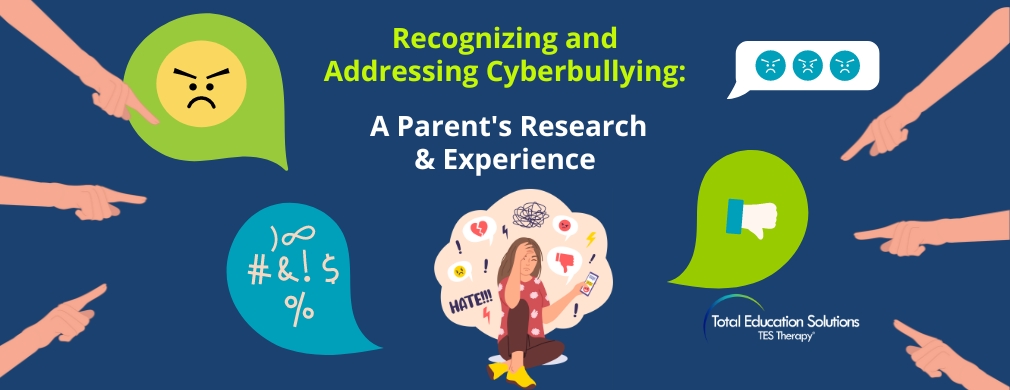Total Education Solutions (TES) created a question and answer series on our Instagram page called Ask an Expert. Our Occupational Therapist, Monica McCallum, MS, OTR/L, answered the most common questions regarding Occupational Therapy. Monica McCallum, MS, OTR/L is a licensed and certified Occupational Therapist in Michigan, and has been an OT for 6 years. She received her Master’s of Science in Occupational Therapy Degree from Saginaw Valley State University. Monica has been a part of the TES Team since 2015 as a school-based OT. She loves working with students on developing skills to help them succeed in and out of the classroom.
We compiled the questions and answers or you can click here to see the Q&A on our Instagram page!
1. What is Occupational Therapy (OT) and how do Occupational Therapists and Physical Therapists (PT) work together?
Occupational Therapy is a healthcare profession that helps people across their lifespan do the things they want and need to do through Activities of Daily Living or ADL’s. Occupational therapists promote health, prevent injury, or help individuals cope with their injuries, illnesses, or disabilities. The main goal for OT is to improve function by participating in and engaging in everyday activities. Typically, a client will have an initial evaluation to determine their strengths and weaknesses and develop goals. Once the goals are established, a plan will be set in place to achieve those goals and constant observation and evaluation to adjust the plan as necessary.
OT’s and PT’s often work together and are many times both part of the client’s team. In VERY general terms, OT focuses on more fine motor skills and function-based ADLs, whereas PT focuses on larger muscle groups, gait training, and gross motor tasks. There is much more distinction to each profession depending on the setting they are working in. Which leads us to our next question—
2. Where do OT’s work and do OT practitioners just work in hospitals?
OT’s work in many different settings. Since we work with individuals across their lifespan, we can provide services for infants in the home all the way to a hospice setting for end of life care. Some other settings for OTs are:
- Outpatient pediatric and adult orthopedic and/or neurologic clinics
- Hospitals
- Hand clinic
- Inpatient rehabilitation
- Schools
- Community mental health
- Equine therapy
- Skilled nursing homes
- Home health care
3. How will OT help you get back to your everyday life?
Occupational Therapist’s main goal is getting you back to completing the tasks of your daily life (there’s those ADL’s again!). One of the main ways to do that is by engaging in the activities that you want or need to do. Through our schooling and training, we are taught to complete an analysis of the activities you want/need to do. We look for the underlying skills that need to be present in order to complete the targeted task. When there is an issue with some of the basic skills, we target that with exercises or treatment and build our way to the desired outcomes.
For example, if a child wants to write his/her own name but cannot hold their pencil properly, we would look to see what fine motor skills they may be lacking. If strength and finger isolation is the issue, we would use therapy putty or playdough to improve hand strength and practice pinch pattern development with a game.
4. What are some at-home OT activities?
This is a great question and a tough one to answer because the options are ENDLESS! Almost everything is an OT based at-home activity, because everything you do is an Activity of Daily Living.
I will give some examples for pediatrics since that is the area I work in:
- Cooking with your child (develops motor planning, sequencing, fine motor precision, crossing midline)
- Having kids make obstacle courses inside with furniture or outside for a sensory path made out of chalk (self-regulation, promotes integration of the different senses, motor planning)
- Playing make believe restaurant or store for money management
- Michelangelo painting/drawing (shoulder stability and fine motor development)
- Yoga to promote self-regulation and core strength
- Scavenger hunts for visual motor integration and visual perceptual skill development
5. What skills do ‘fine motor skills’ include?
Fine motor skills include the small muscle movements of the fingers, wrists, and hands. They are responsible for activities like writing, typing, grasping and releasing objects, eating, coloring, using scissors or other tools, turning pages of a book, and self-care tasks like buttoning, zipping, tying, and buckling.
6. How do you improve a child’s fine motor skills at home?
In order to improve a child’s fine motor skills at home, you need to have them engage in those tasks just mentioned. Allow them to use different materials to try writing (shaving cream, sand, flour, or rice) a multi-sensory approach is very beneficial for skill development. The best way to get a child to practice fine motor skills is through games, and they will be more engaged when you are playing along with them. They will learn from your actions and will develop their own ways of completing tasks as efficient as possible. It might not be efficient or neat when they first start out but that’s okay! Just like adults, kids learn from mistakes.
7. What is the impact of technology on children’s fine and gross motor skills?
Technology can have both a positive and negative impact on children’s fine motor and gross motor skills. There are some games or apps that are engaging and can help develop finger isolation, help with visual tracking, and encourage learning. With most things, moderation is key. Too much technology can have negative impact on children’s fine motor and gross motor development. So many wonderful skills are developed when kids “unplug” and use their imagination. When technology is used, there is a limitation on different sensory input the child is experiencing. Sensory experiences help us to develop our fine and gross motor skills and create a kind of mental map. Learning to climb a tree or play basketball is much more effective by actually doing those things rather than playing a computer or video game.
8. What are signs of fine-motor delays and gross-motor delays?
Fine and gross motor skills develop over a range of time. Some children develop fine motor skills faster than gross motor, or vice versa. Although developmental milestone charts are a great resource, they may not be the most accurate measure of your child’s development. If there are many skills that you feel your child may be lacking or slow to acquire, it is always best to bring those concerns up to your pediatrician. If you or your child’s teacher notice concerns regarding fine or gross motor skills in the classroom, they can always be brought to the attention of the special education team and the Occupational Therapist.
9. How are fine-motor delays and gross-motor delays diagnosed?
Diagnosing fine and gross motor delays are typically completed by a pediatrician with information gained by parent report, medical history, check of fine and gross motor skills present, looking over developmental milestones, and observations. If the child is school aged, they may ask for an occupational therapy assessment and report. There are a few different assessments that therapists use to determine motor proficiency.
10. What are sensory processing issues?
Sensory Processing is the way that our peripheral and central nervous system receives sensory messages, interprets or organizes them, and then produces an output or a response. When there are sensory processing issues, the brain may receive the messages, but is not able to organize the information to give a proper response. For example, a very small amount of sensory input can cause an extreme reaction like a fire alarm causing someone to scream, cry and/or run. On the other hand, a child could be what we call ‘under responsive’. In this case, they require much more sensory input to produce a proper reaction. Such as a child needing a lot of movement/swinging/jumping/running/climbing before they can sit down to complete work at a table.
Some signs of sensory processing issues may be:
- Poor motor coordination
- Hypersensitivity to touch, light, sound, taste or smell
- No sense of boundaries
- High tolerance for pain
- Easily distracted
11. How do OT’s help kids with sensory issues?
OT’s help students with sensory issues by engaging them in interactive and fun activities that regulate the senses. If the student needs movement, we might suggest that they have the job of passing out the paper in their class. If they require more tactile stimulation to concentrate on a lesson, we might provide them with a fidget on their pencil or a piece of Velcro under their desk. If there is a hypersensitivity to touch, we may incorporate a brushing protocol into daily life. The main objective is to retrain the senses so that they are able to function safely and appropriately in their environment.
For more information on how our OTs can help your child thrive, please visit our Pediatric Occupational Therapy services page.


 19 Jun 2020
19 Jun 2020 







